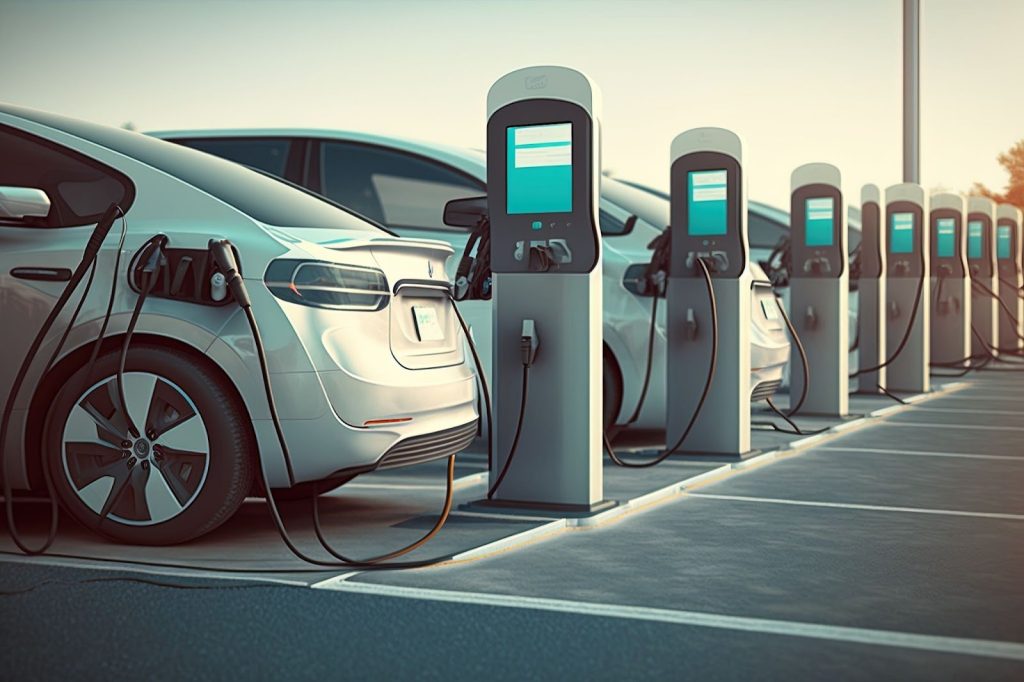Electric Vehicle Maintenance Guide: 10 Essential Tips for EV Owners

Electric vehicle maintenance is a crucial aspect for any EV owner. Unlike traditional gas-powered vehicles, electric cars offer unique benefits and challenges when it comes to maintenance. Understanding these nuances can prolong the life of your vehicle while ensuring a smooth driving experience. This comprehensive guide covers everything you need to know about caring for your electric vehicle—from battery upkeep to tire rotations and beyond.
Maintenance for Electric Vehicles: What You Need to Know

Maintaining an electric vehicle is different from conventional car care due to their distinctive mechanics and components. While they require less overall maintenance—thanks to fewer moving parts—they still have specific areas that demand attention and regular servicing. With a diligent approach toward electric vehicle maintenance, owners can ensure longevity and efficiency while enjoying the numerous benefits of electric mobility.
Electric Vehicle Battery Maintenance
The heart of any electric vehicle is its battery, which directly influences performance, range, and longevity. Proper battery care is paramount in ensuring that your electric vehicle serves you well for years.
Charging Practices
One of the most critical aspects of battery maintenance involves charging habits. It’s essential to maintain your battery charge between 20-80% for optimal lifespan. Regularly allowing the battery to dip below 20% or charging it fully can lead to accelerated degradation. If you’re considering a long trip, a full charge is acceptable, but frequent rapid charging should be limited to preserve battery health.
Personal insights on charging reveal that many EV drivers find that charging at home overnight leads to a stress-free routine. Using a Level 2 home charger allows for efficient charging without the detrimental effects of rapid charging. Additionally, being mindful of temperatures—both hot and cold—can significantly impact battery health. Extreme conditions can shorten battery lifespan, so garage storage is often recommended if possible.
How Long Do Electric Vehicle Batteries Last?
Understanding the expected lifespan of your electric vehicle’s battery is vital. Most batteries last anywhere from 10 to 20 years, depending on usage patterns and maintenance practices. Federal regulations mandate warranties for a minimum of eight years or 100,000 miles, providing peace of mind for EV owners.
For those curious about the EV battery lifespan, consider tracking its performance through apps provided by manufacturers. Many allow users to monitor battery health, helping to identify issues before they become problematic. This proactive approach can save time and costs in the long run.
Battery Replacement
Eventually, even with proper care, every battery will need replacing. Knowing when and how to replace your battery can make a significant difference.
Signs of Degradation
As an electric vehicle ages, signs of battery degradation may become apparent. Owners may notice decreased range, slower acceleration, or longer charging times. It’s important to recognize these symptoms early and consult with a professional to assess battery health.
Many manufacturers provide diagnostic tools that can help evaluate remaining battery life. Keeping track of these metrics can guide decisions about potential replacements.
Choosing a Replacement Battery
When the time comes to replace your electric vehicle battery, it’s crucial to choose the right one. Always opt for OEM (Original Equipment Manufacturer) batteries specifically designed for your vehicle model.
Researching online forums and manufacturer recommendations can yield valuable insights into the best battery options available. Investing in high-quality batteries may increase upfront costs but will likely pay off in longevity and performance.
Tires

Tires are another critical area of electric vehicle maintenance, as they bear the weight of the vehicle and determine handling performance. Given that electric vehicles typically weigh more than gas cars due to their heavy batteries, tire management becomes even more essential.
Tire Wear Patterns
Electric vehicles’ instant torque can accelerate tire wear, causing them to degrade faster compared to traditional vehicles. It’s not uncommon for tires on an EV to wear out approximately 20% quicker. Hence, keeping a close eye on tread depth is necessary for both safety and performance.
Taking the time to understand tire wear can also help optimize replacement choices. Noticing uneven wear? This might indicate alignment issues or improper inflation. Both must be addressed immediately to prevent further damage.
Tire Rotation and Maintenance
Regular rotation is key to achieving maximum tire lifespan. For electric vehicles, rotating tires when tread depth reaches around 2mm is advisable. Consequently, adhering to a rotation schedule helps ensure even wear across all tires.
Don’t underestimate the importance of maintaining proper tire pressure; check monthly to keep tires inflated to the manufacturer’s specifications. Under-inflated tires can reduce range and efficiency, while over-inflation can lead to blowouts.
The Brakes

Electric vehicles come equipped with regenerative braking systems that help conserve battery life by converting kinetic energy back into stored energy. This system extends brake life, often doubling the duration compared to internal combustion engine vehicles.
Regenerative Braking Maintenance
While regenerative braking reduces wear on conventional brakes, regular maintenance remains crucial. Inspecting, cleaning, and lubricating brakes annually—or every 12,500 miles—ensures that debris does not accumulate, affecting performance.
After experiencing unusual sounds during braking or diminished braking power, seeking immediate inspection is wise. Catching problems early can save money and enhance safety.
Brake Fluid Checks
Brake fluid is a vital component of your EV’s braking system, requiring periodic checks to ensure corrosion levels are within safe limits. Utilizing test strips can help assess the fluid’s condition and inform scheduling for changes per the owner’s manual.
Understanding fluid dynamics enhances personal safety. Brake efficiency directly correlates to the condition of brake fluid. An effective maintenance strategy ensures responsive braking performance and contributes to overall vehicle safety.
Coolant Replacement
The cooling system in electric vehicles plays a pivotal role, especially concerning battery temperature regulation. The coolant prevents overheating, safeguarding the battery and ensuring optimal performance.
Importance of Coolant Levels
Maintaining appropriate coolant levels is essential for battery health. Regular checks—ideally every 7,500 miles—will help catch leaks or deficiencies before they result in serious harm. A low coolant level can lead to overheating, ultimately shortening battery life.
Coolant Replacement Schedule
Most EVs require coolant replacement approximately every five years or 100,000 miles, but it’s vital to consult your owner’s manual for specifics. Adhering to this schedule helps avoid unnecessary complications that can arise from neglecting such a fundamental system.
Monitoring coolant behavior can provide important insights. If temperatures fluctuate excessively or there’s a noticeable drop in the efficiency of the heating system, consult a technician to investigate potential issues.
Fluid Check
Electric vehicles have fewer fluids than traditional cars, yet regular checks on essential fluids remain necessary for smooth operation.
Checking Wiper Fluid and Other Fluids
Start with checking windshield wiper fluid. Keeping a full reservoir ensures visibility during inclement weather. However, don’t forget to change brake fluid based on the manufacturer’s recommendations—assessing corrosion levels with test strips aids in knowing when to replace it.
Engaging in annual fluid checks can lead to greater awareness of vehicle health. Staying ahead of minor issues prevents larger concerns and costly repairs down the line.
The Role of EV Fluid Levels
Understanding fluid levels in your electric vehicle enhances overall knowledge and maintenance capability. While EVs are simpler, every fluid serves a unique purpose—each contributing to the electric motor’s efficiency. Taking the initiative to monitor these can foster a deeper connection with your vehicle.
Wiper Blades
Visibility is paramount for safe driving, making wiper blades a critical element of electric vehicle maintenance. They should be replaced regularly to ensure they function properly.
Wiper Blade Replacement Frequency
Replacing wiper blades twice yearly—upon entering spring and fall—or following the owner’s manual guidelines is advisable. Seasonal changes can often affect the integrity of wiper materials, leading to reduced efficacy.
Investing in quality wipers pays dividends. Cheaper models may fail sooner and diminish visibility during critical moments. Consider opting for premium wiper blades to enhance safety.
Cleaning Wiper Blades
In addition to replacements, cleaning wiper blades periodically can boost their lifespan and effectiveness. Dirt and debris accumulation leads to streaks and reduced visibility. Allocating a minute or two during fuel stops can create a noticeable difference.
Being proactive with wiper blade care reflects a responsible approach to electric vehicle ownership, emphasizing safety and reliability.
Cabin Air Filter
The cabin air filter is essential for maintaining clean air inside your electric vehicle, impacting not only comfort but also health.
Change Frequency
Typically, changing the cabin air filter approximately every 35,000 miles is recommended. However, some factors—such as driving conditions—may necessitate more frequent replacements. Unfortunately, neglected filters can lead to poor air circulation and unpleasant odors.
Checking the owner’s manual provides specific details regarding filter location and replacement instructions, simplifying the process considerably.
Benefits of a Clean Cabin Filter
Maintaining a clean cabin filter elevates the driving experience. Enhanced air quality promotes better respiratory health, particularly beneficial for individuals with allergies or asthma.
Furthermore, investing time in cabin filter maintenance showcases a commitment to sustainable car care—an ethos that aligns well with owning an electric vehicle.
Take Care of the Body
An often-overlooked aspect of electric vehicle maintenance is the exterior body care. Protecting the paint and finish is vital for long-term aesthetics and resale value.
Washing and Waxing Regularly
Regularly washing and waxing your EV protects the paint from corrosive substances like bird droppings and tree sap. Establishing a routine washing schedule prevents dirt buildup and potential scratches caused by debris.
Using high-quality wax can add an additional layer of protection, enhancing shine while shielding against UV rays and environmental contaminants.
Attention to Corrosive Substances
Paying special attention to removing corrosive substances can prolong paint life. Neglect can lead to erosion, which diminishes visual appeal and might require costly repainting later on.
Maintain a toolkit of car care products that includes gentle cleaners specifically formulated for electric vehicle paint finishes. Prioritizing exterior care reflects the appreciation of your investment and the environment.
Video
Conclusion
Electric vehicle maintenance may differ significantly from traditional car care, but following this guide will empower owners to maximize their vehicle’s lifespan and performance. By focusing on battery management, tire care, brake inspections, and other essential areas, you can embrace the full potential of electric mobility while contributing to a more sustainable future.
Ultimately, electric vehicle maintenance is about fostering a harmonious relationship with your vehicle, enhancing not only the driving experience but also promoting a greener tomorrow. Stay informed, stay engaged, and enjoy the journey of electric driving!



